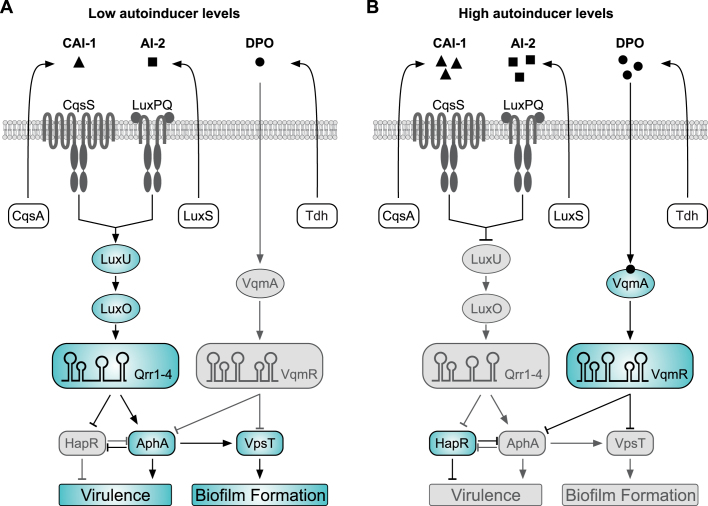Figure 1.
Quorum sensing in V. cholerae is controlled by three autoinducer molecules. The CAI-1 and AI-2 autoinducers are produced by CqsA and LuxS and detected by the membrane-bound CqsS and LuxPQ receptors, respectively. The DPO autoinducer derives from threonine catabolism, and requires the Tdh (threonine dehydrogenase) enzyme. DPO is released into the environment and binds to and activates the VqmA receptor. (A) At low autoinducer concentrations, CqsS and LuxPQ act as kinases to phosphorylate LuxU. LuxU-P transfers the phosphate to LuxO, and LuxO-P induces the expression of the Qrr1–4 sRNAs. The Qrr sRNAs act post-transcriptionally to repress hapR and activate aphA, promoting virulence gene expression and biofilm formation. AphA also activates the transcription of vpsT. (B) At high autoinducer concentrations, binding of CAI-1 and AI-2 to CqsS and LuxPQ, respectively, converts the receptors to phosphatases, which reduces LuxO-P levels and inhibits qrr1–4 expression. Under these conditions, aphA is repressed and hapR is activated. The VqmA-DPO complex induces the transcription of the VqmR sRNA. VqmR inhibits biofilm formation by repressing VpsT and virulence gene expression by inhibiting AphA. In addition, HapR and AphA antagonize each other at the transcriptional level. Active factors are highlighted in blue, inactive (repressed) factors are shown in gray.

